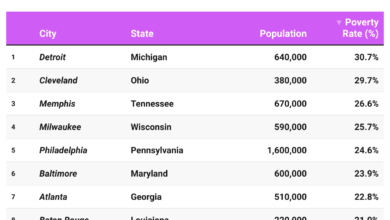Michigan State Median Household Income by Metro Areas in 2023

Michigan’s diverse economy results in significant income disparities among households in its different metro areas.
Based on 2023 data, we take a closer look at the median household income across Michigan’s metro regions to understand the financial standing of various communities.
Top-Performing Metro Areas
The metro area with the highest median household income in Michigan is Ann Arbor, with a reported income of $62,555. Ann Arbor’s strong economy is driven by the University of Michigan, healthcare, and technology industries, making it a hub for high-paying jobs.
Other metro areas with relatively high median household incomes include:
- Midland, MI – $59,800
- Monroe, MI – $57,00
- Grand Rapids-Wyoming, MI – $55,750
- Holland, MI – $55,620
- Traverse City, MI – $53,200
These cities benefit from a mix of manufacturing, education, healthcare, and technology-based industries that provide stable employment opportunities.
Mid-Range Income Metro Areas
Several metro areas fall within the $45,000–$55,000 range, indicating moderate income levels. These include:
- Detroit-Warren-Dearborn, MI – $54,075
- Lansing-East Lansing, MI – $51,600
- Ionia, MI – $50,000
- Jackson, MI – $47,700
- Kalamazoo-Portage, MI – $49,100
These metro areas host a diverse range of industries, from automotive and education to healthcare and service sectors.
Lower Income Metro Areas
In several metro areas, the median household income is less than $45,000, placing them at the lower end of the income distribution.
- Alpena, MI – $39,822
- Houghton, MI – $39,400
- Cadillac, MI – $40,945
- Mount Pleasant, MI – $40,700
- Big Rapids, MI – $41,835
- Alma, MI – $42,155
Many of these areas rely on smaller industries, local businesses, and seasonal tourism, leading to lower average household incomes.
Economic Insights and Implications
The data shows a clear correlation between the presence of educational institutions, strong healthcare networks, and technology-driven industries with higher household incomes. Metro areas like Ann Arbor, Grand Rapids, and Midland continue to thrive due to a diversified and knowledge-based economy.
Areas with lower median incomes frequently depend on industries like traditional manufacturing, retail, or seasonal tourism, making their economies vulnerable to ups and downs. These income gaps emphasize the importance of economic development initiatives that support struggling regions through investments in job training, infrastructure improvements, and incentives for businesses.




